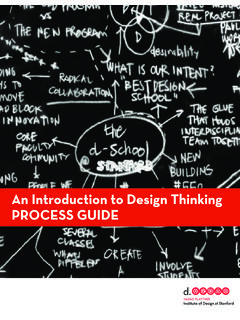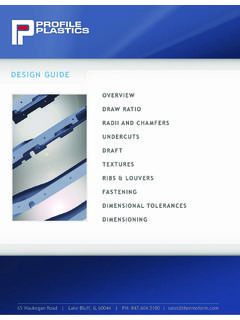Transcription of Kinematic and Dynamic Vehicle Models for Autonomous ...
1 Kinematic and Dynamic Vehicle Models for Autonomous Driving Control design Jason Kong1 , Mark Pfeiffer2 , Georg Schildbach1 , Francesco Borrelli1. Abstract We study the use of Kinematic and Dynamic Vehicle does not need to be physically realizable, respect Dynamic Models for model-based control design used in Autonomous constraints. driving. In particular, we analyze the statistics of the forecast error of these two Models by using experimental data. In Published MPC schemes use Dynamic Vehicle Models [11, addition, we study the effect of discretization on forecast error.]
2 P. 15-46] combined with linear [10], Pacejka [8], and Fiala We use the results of the first part to motivate the design of [7] tire Models . This approach has two disadvantages: it a controller for an Autonomous Vehicle using model predictive is computationally expensive and any tire model becomes control (MPC) and a simple Kinematic bicycle model. The singular at low Vehicle speeds. Tire Models use a tire slip proposed approach is less computationally expensive than existing methods which use Vehicle tire Models . Moreover it angle estimation term which has the Vehicle velocity in the can be implemented at low Vehicle speeds where tire Models denominator.
3 This prohibits the use of the same control become singular. Experimental results show the effectiveness of design for stop-and-go scenarios, common in urban driving. the proposed approach at various speeds on windy roads. In this paper, we propose to address both disadvantages I. I NTRODUCTION by using a Kinematic bicycle model. The paper has two contributions: In the first part, a comparison between a Work in Autonomous vehicles has grown dramatically in Kinematic and Dynamic bicycle model. The Dynamic model the past several years due to advances in computing and utilizes a linear tire model to describe the wheel/ground sensing technologies.
4 However, the idea of an Autonomous interaction. We examine how well the two Models are able to Vehicle has been around as early as the 1920s [1]. Recent predict a Vehicle 's future states compared to measured states competitions [2] [4] have accelerated the research in this of an experimental test. We also study the effect of sampling area and helped advance sensors and algorithms needed to time on forecast error. Our unintuitive results show that the design an Autonomous Vehicle . error statistics are comparable for both Models especially The main components of a modern Autonomous Vehicle are when the Kinematic model is sampled at a slower rate.
5 We localization, perception, and control. This paper will discuss present data and provide an explanation of the findings. the control of the Vehicle 's acceleration, brake, and steering using Model Predictive Control (MPC). In MPC [5] at each In the second part, we use the results of the first part to sampling time step, starting at the current state, an open- motivate the design of a controller for an Autonomous Vehicle loop optimal control problem is solved over a finite horizon. using model predictive control (MPC) and a Kinematic bicy- The optimal command signal is applied to the process only cle model.
6 The proposed approach is less computationally ex- during the following sampling interval. At the next time step pensive than existing methods which use Vehicle tire Models . a new optimal control problem based on new measurements Moreover it can be implemented at low Vehicle speeds where is solved over a shifted horizon. The optimal solution relies tire Models become singular. We present experimental results on a Dynamic model of the process, respects input and output which show that the proposed controller provides satisfactory constraints, and minimizes a performance index.
7 Control performance in a simulation and a wide range of MPC has been successful in semi- Autonomous and au- experiments. tonomous driving [6] [10]. In fact, MPC is suited for this The paper is organized as follows. In Section II, an class of problems since it can handle Multi-Input Multi- overview of the Kinematic bicycle model and Dynamic bi- Output systems with input and state constraints while taking cycle model are discussed. These two Models are compared into account the nonlinear dynamics of the Vehicle . More- in Section III.
8 Section IV presents our proposed MPC. over, the design task of path-generation and path-following formulation. Section V discusses the experimental setup. The is simplified: the reference path fed to the MPC controller experimental results of the controller are presented in Section VI. We conclude in Section VII. *This material is based upon work partially supported by the National Science Foundation under Grant No. 1239323. Any opinions, findings, and conclusions or recommendations expressed in this material are those of the authors and do not necessarily reflect the views of the National II.
9 V EHICLE M ODELS. Science Foundation. The work was also supported by the Hyundai center of Excellence at UC Berkeley. 1 Department of Mechanical Engineering, University of A. Kinematic Bicycle Model California, Berkeley, {jasonjkong, schildbach, 2 Institute for Dynamic Systems and Control, ETH Zurich, The nonlinear continuous time equations that describe a Kinematic bicycle model [11, p. 26] (see Figure 1) in an inertial frame are rate. m and Iz denote the Vehicle 's mass and yaw inertia, respectively. Fc,f and Fc,r denote the lateral tire forces at the front and rear wheels, respectively, in coordinate frames x = v cos( + ) (1a) aligned with the wheels.}
10 Y = v sin( + ) (1b) For the linear tire model, Fc,i is defined as v = sin( ) (1c) Fc,i = C i i , (3). lr v = a (1d) where i {f, r}, i is the tire slip angle and C i is the tire . lr = tan 1 tan( f ) (1e) cornering stiffness. lf + lr III. C OMPARISON BETWEEN Dynamic AND K INEMATIC. where x and y are the coordinates of the center of mass M ODELS. in an inertial frame (X, Y ). is the inertial heading and v is the speed of the Vehicle . lf and lr represent the distance We performed an experiment where the Vehicle states are from the center of the mass of the Vehicle to the front and measured during driving the winding track at Hyundai's Cali- rear axles, respectively.




